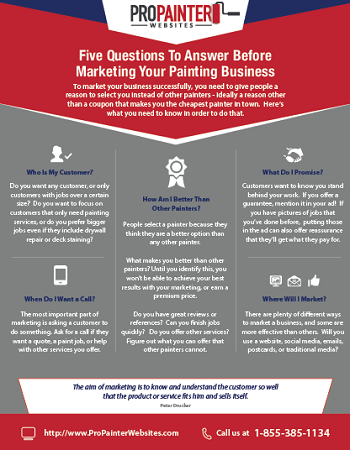Variables To Consider For Industrial Outside Paint By Season: Crucial Info You Need To Have
Variables To Consider For Industrial Outside Paint By Season: Crucial Info You Need To Have
Blog Article
Web Content Writer-Ford Chaney
When you're planning an industrial exterior painting project, seasonal aspects can make or damage your results. You'll intend to consider how temperature level and moisture impact paint application and drying out times. Picking the best season can guarantee your paint adheres effectively and lasts much longer. But which periods are truly the best for this sort of job? Allow's discover the key elements that can influence your job's success.
The Effect of Temperature on Paint Application
When you're preparing an industrial exterior painting task, the temperature level can significantly impact just how well the paint adheres and dries.
Ideally, you wish to paint when temperatures vary in between 50 ° F and 85 ° F. If it's too cool, the paint may not cure correctly, leading to concerns like peeling off or cracking.
On the other side, if it's also hot, the paint can dry as well promptly, stopping correct adhesion and resulting in an uneven surface.
You ought to likewise take into consideration the time of day; morning or late afternoon provides cooler temperature levels, which can be a lot more positive.
Always check Suggested Webpage for the details paint you're using, as they usually supply advice on the perfect temperature level array for ideal results.
Humidity and Its Impact on Drying Times
Temperature level isn't the only ecological element that affects your industrial exterior painting job; humidity plays a considerable role as well. High moisture levels can slow down drying out times significantly, affecting the overall quality of your paint work.
When the air is filled with wetness, the paint takes longer to cure, which can cause problems like inadequate bond and a greater risk of mildew growth. If you're painting on an especially damp day, be gotten ready for prolonged delay times in between layers.
It's crucial to check regional weather conditions and plan appropriately. Ideally, go for moisture levels between 40% and 70% for optimal drying out.
Keeping straight line painter consider mind guarantees your job stays on track and supplies a long lasting finish.
Best Seasons for Commercial Exterior Paint Projects
What's the very best season for your industrial external paint jobs?
Spring and early autumn are generally your best bets. Throughout these seasons, temperatures are moderate, and humidity degrees are commonly lower, producing optimal problems for paint application and drying.
Avoid summer's intense heat, which can create paint to completely dry as well swiftly, leading to poor bond and finish. In a similar way, winter months's cool temperatures can impede appropriate drying out and treating, running the risk of the durability of your paint job.
Go for days with temperature levels in between 50 ° F and 85 ° F for ideal results. Bear in mind to check the regional weather forecast for rainfall, as damp conditions can spoil your task.
Preparation around these aspects guarantees your paint project runs efficiently and lasts much longer.
Final thought
To conclude, preparing your business external paint jobs around seasonal considerations can make a substantial distinction in the outcome. By organizing job throughout the excellent temperatures and humidity levels, you'll make sure better bond and drying out times. Bear in mind to watch on neighborhood weather report and pick the right time of year-- springtime and early fall are your best bets. Taking these actions will aid you accomplish a durable and professional coating that lasts.
